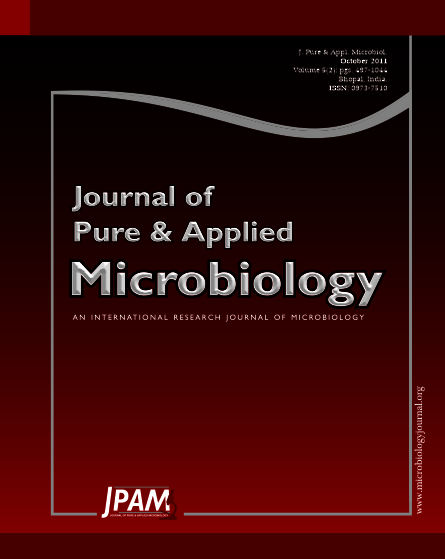The present study deals with the role of probiotics in ornamental fish platy Xiphophorus maculates. Two distinct colonies were isolated from the intestine of Platy through serial dilution technique and pour plate method. Two distinct colonies were isolated from the intestine of Platy through serial dilution technique and pour plate method. The isolated colony was identified by using biochemical tests and identified as Bacillus subtilis. The identified microbe Bacillus subtilis was mass multiplied by using nutrient broth. Five different feeds having different concentration of Bacillus subtilis such as Ex. Feed I (Control), Ex. Feed II (101 cells), Ex. Feed III (102 cells), Ex. Feed IV (103 cells) and Ex. Feed V ( 104 cells) were prepared by using fish meal, ground nut oil cake, wheat flour, tapioca flour, fish oil, sunflower oil, supplevite- mix, sodium chloride and sodium benzoate. Role of microbes on feed utilization parameters such as feed consumption, feed conversion efficiency, feed conversion ratio, growth, percentage growth, relative growth rate, assimilation, metabolism, net and growth efficiency of Platy were studied for a period of 30 days. Feed consumption was higher in Ex. Feed V containing 104 cells of Bacillus subtilis. The growths, percentage growth, relative growth rate, gross and net growth efficiency was also higher in Ex. Feed V containing higher cells of Bacillus subtilis. Assimilation and metabolism were also higher in Ex. Feed V. From the results, it is inferred that the Ex. Feed V was suitable for the growth of platy.
Probiotics, Ornamental fish, Platy, Xiphophorus maculates
© The Author(s) 2011. Open Access. This article is distributed under the terms of the Creative Commons Attribution 4.0 International License which permits unrestricted use, sharing, distribution, and reproduction in any medium, provided you give appropriate credit to the original author(s) and the source, provide a link to the Creative Commons license, and indicate if changes were made.


